This will be my last post in the series on my recent travel to Costa Rica. It is focused on Epiphytes, plants that grow on the surface of other plants and deriving their nutrients mostly from the air and rainfall. In the tropics these organisms include many ferns, cacti, orchids, bromeliads and Philodendron vines.
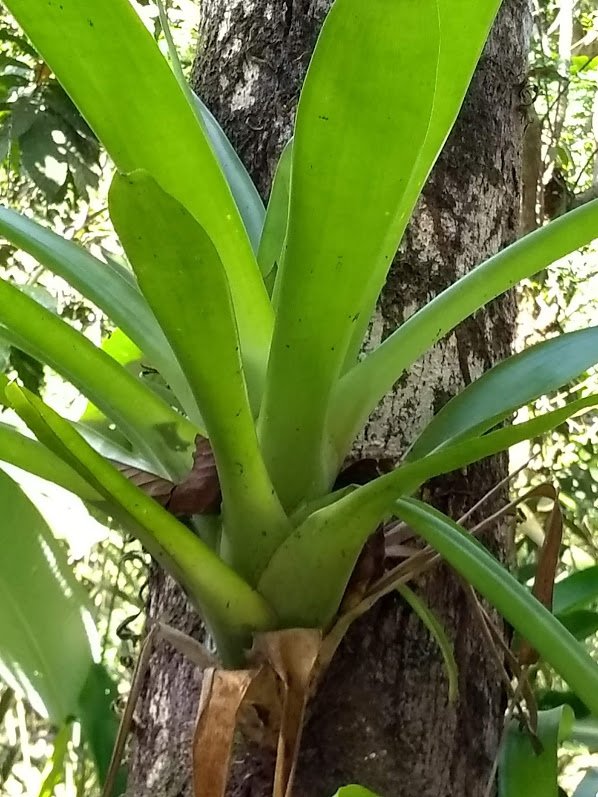
Epiphytic Bromeliad of the Bromeliaceae family of angiosperms. An epiphytic bromeliad growing on a tree at Villa Vanilla.
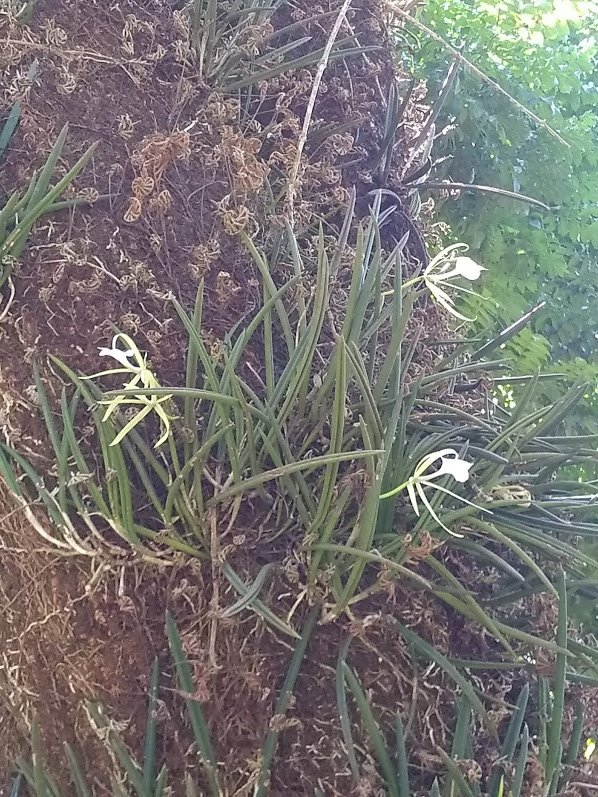
Lady-of-the-night Orchid - Brassavola of the Orchidaceae family of angiosperms. This cluster was found growing on a tree in the Tulemar Resort.
Both bromedliads and orchids have a special kind of photosynthesis termed Crassulacean Acid Metabolism. This photosynthesis mechanism involves the processes of:
capture of CO2 at night in the form of malic acid while plant stomates are open (this restricts water loss from the plant).
closure of stomates during the day time (further restricting water loss from the plant)
conversion of stored malic acid to CO2 during the day time in the often succulent leaf tissue.
reassimilation of the CO2 into sugars and starch during the day time via conventional C3 photosynthesis.
For more details of this pathway, please see: Crassulacean Acid Metabolism. CAM plants have exceptional drought tolerance and water-use efficiency. This enables the species to survive long periods of water deficits during the dry season.
Philodendron is a large genus of flowering plants in the Araceae family. Philodendron vines are found in abundance growing on a wide range of rainforest trees at Manuel Antonio National Park (Parque Nacional Manuel Antonio).
The leaves of seedling philodendrons are usually heart-shaped. Early in the life of the plant, but after it has matured past the seedling stage, the leaves will have acquired the typical juvenile leaf's shape and size. Later in the philodendron's life, it starts producing adult leaves, a process called metamorphosis.
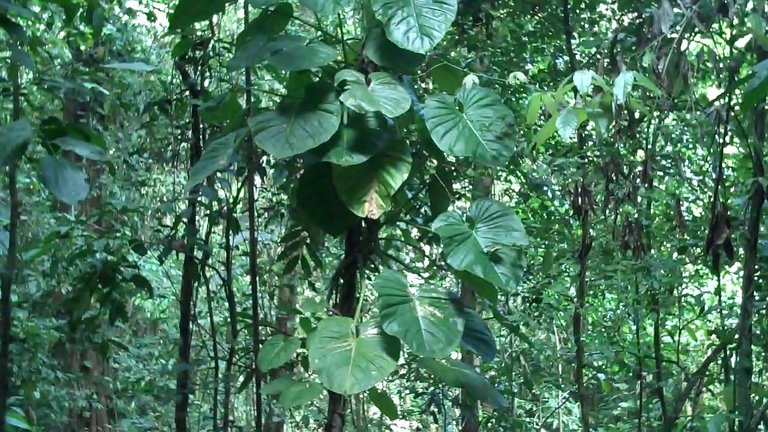
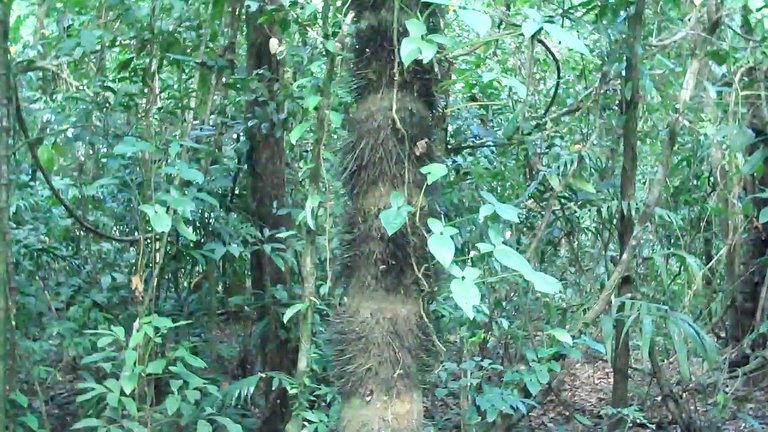
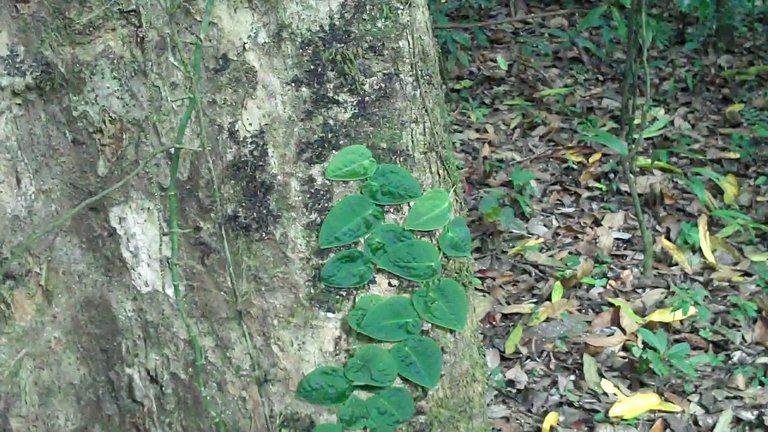
During my visit (January 2019) it was the dry season, and I am determined to return in September during the rainy season when the epiphytes are likely to be at their best!
Previous articles in this series:
Costa Rica - Part 1 - The Sloth Institute Costa Rica
Costa Rica - Part 2 - Scintillating Sunsets
Costa Rica - Part 3 - Superb Scenery
Costa Rica - Part 6 - Black Pepper, Chili Pepper and Cinnamon
This post has been voted on by the SteemSTEM curation team and voting trail in collaboration with @curie.
If you appreciate the work we are doing then consider voting both projects for witness by selecting stem.witness and curie!
For additional information please join us on the SteemSTEM discord and to get to know the rest of the community!
Thank you!
Nice pictures that make me feeling warmer in this cold season (in the Northern hemisphere at least).
Thank you! It was a shock to return from Costa Rica to the brutal cold of the Midwest. I hope that Punxsutawney Phil is correct this year, and that there will be an early spring!
Groundhog Day: Punxsutawney Phil doesn't see his shadow, predicts an early spring
The midwest was especially cold these days... This makes it an unfair comparison somehow :D
...makes me nervous even years after I was working on it with no success
Congratulations @davidrhodes124! You have completed the following achievement on the Steem blockchain and have been rewarded with new badge(s) :
Click here to view your Board
If you no longer want to receive notifications, reply to this comment with the word
STOP